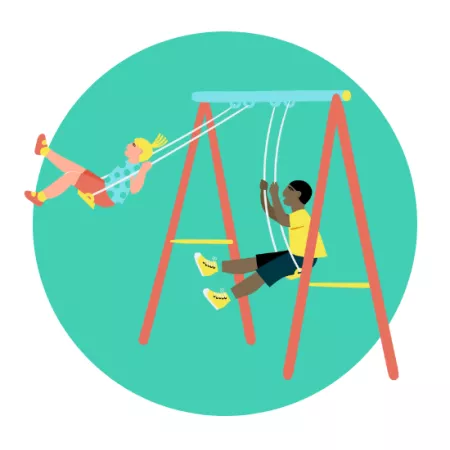Occupational therapy for children and young people
5 minute read
Why is occupation important for children’s development, health and wellbeing?
Occupational therapists (OTs) help children and young people take part in the daily activities (occupations) that are important to them – at home, at school and elsewhere.
‘Occupational therapy helped my son immensely. We understood more the impact of sensory sensitivities, we used the report to inform school intervention, our OT went to school to talk through interventions. His teacher was wonderful, so engaged. The role of OT has been huge for us as a family’ – a parent
Some children and young people have difficulty doing the things they want or have to do because they have physical, learning or mental health needs.
Others struggle due to illness or family circumstances, or because of changes that happen as they grow and develop.
Whatever the reason, we – occupational therapists – help children and young people take part in the activities and routines – the occupations – that give purpose and meaning to their lives. These include:
- self-care activities – getting dressed, eating and sleeping
- productive occupations – learning, writing, doing PE
- play and leisure – playing with friends and doing sports or hobbies.
What do we do?
We help children and young people grow, thrive and reach their full potential by identifying:
- activities they do well and those they find difficult
- personal, environmental and task-specific factors that help or limit their ability to take part
- different ways of doing things, teaching new skills or changing the environment to make it easier for them to participate, have fun and achieve.
‘He seems to be able to recognize his own needs more since the therapy and has been able to attend school much more regulated’ – a parent

Types and levels of occupational therapy support
Children and young people may need different types of occupational therapy support at different times.
They can move between levels as their needs change, and as their skills and participation improve.
Offering different levels of support means children and young people can access the occupational therapy they need, when they need it.
We’ve broken them down into three rough categories.
Occupational therapy really helped me at a young age. They advised simple, practical strategies like a ruler with a handle and a sloping desk to help my writing which really improved it. Also things like laying clothes in the order of putting them on, as this was a struggle…I have massive appreciation for the work OTs do!" – young adult
How occupational therapy makes a difference – a parent’s view
‘Our daughter’s life has been transformed by occupational therapy. Every single self-care act has been patiently taught by a skilled professional.
Our daughter is currently six, and from one year old they have patiently worked their way up from grasp to point. Working on isolating the fine motor skills required to dress, feed, and communicate.
She can now dress and feed herself. She loves to wash herself and brush her hair. She has a great pen grip and walks everywhere with a pen and notepad to draw and is making outstanding progress towards writing legible letters and numbers.
When she was two, we were told that she was essentially a vegetable and there was no hope – that didn’t stop the dedicated professionals in her life who continued to determinedly work to support her in achieving her milestones.
Bear in mind this includes the Covid years, with an OT working on shape-sorters and puzzles via Zoom – helping every step of the way.’